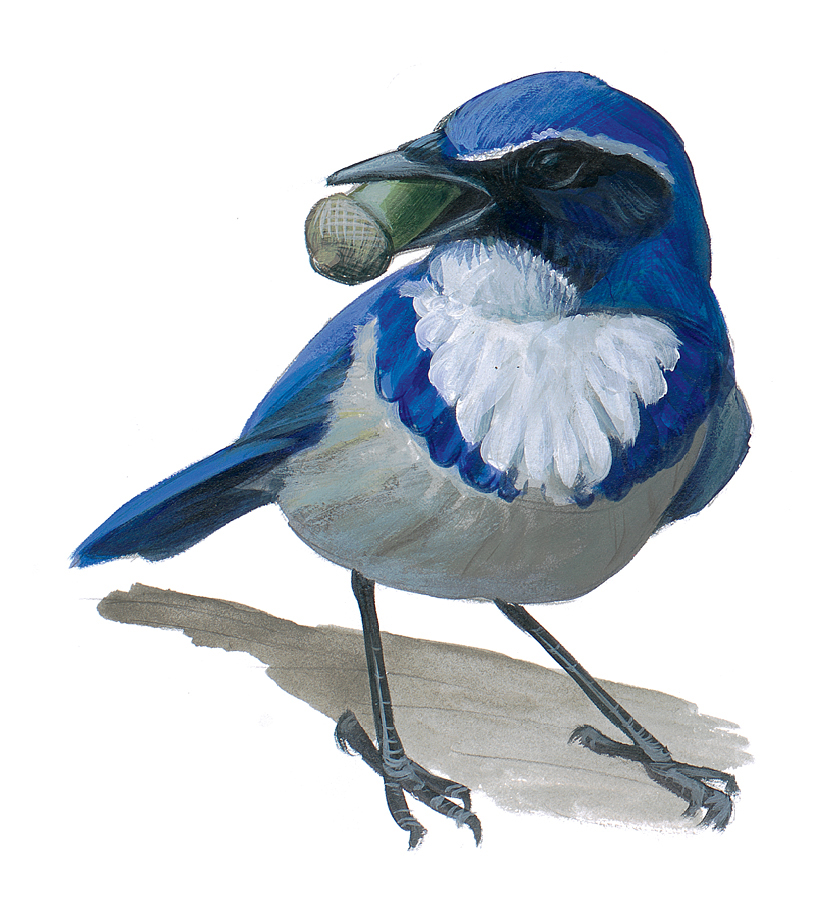Scrub-Jays

California Scrub-Jay
A brash visitor to bird feeders, especially fond of peanuts

California Scrub-Jay
A brash visitor to bird feeders, especially fond of peanuts
■ Many jays rely on acorns for food, in particular the California Scrub-Jay, which can store up to five thousand acorns in the fall for use in the winter and spring. They have evolved a reinforced lower jaw for hammering hard objects—including acorns. They hit the acorn with the tip of the lower mandible to pierce the shell. Similar to woodpeckers, the lower jaw rather than the skull absorbs the force of impact. One significant challenge of eating acorns is that they have high levels of tannins, which bind with proteins and makes them unavailable. Acorns are high in fat and carbohydrates, but, eating acorns alone, jays lose weight rapidly because tannins lock up more protein than the birds get from the acorns. If a bird has access to other sources of protein—enough to make up for what the tannins remove—then acorns in moderation can be a valuable part of the diet.

A California Scrub-Jay opening an acorn by hitting it with the tip of the lower mandible
■ Jays are experts at hiding food that they want to save for later. They usually hide food on the ground by digging a small hole, stuffing the food into it, then covering it with a leaf or small rock. Using their navigational abilities and extraordinary memory, they can keep track of thousands of different hidden items (see this page). Perishable things like insects are retrieved within days; long-lasting items like seeds can be left for months. Some jays spy on others and steal food after it has been cached. If a jay thinks it was observed while hiding food, it will return secretly a few minutes later to move the cached food to a new and better hiding place. This demonstrates a high level of intelligence, including an awareness of the intentions of other jays.

A California Scrub-Jay about to hide an acorn
■ A recent study in California found that many species of birds are already adapting to warming temperatures, nesting five to twelve days earlier than they did one hundred years ago. This change in timing matches the temperature shift over that time, and is probably both to avoid high summer temperatures and to synchronize with plant and insect cycles that have shifted earlier. Resident birds can sense the local conditions and make adjustments, but long-distance migrants face a more complicated challenge. Their return from remote wintering grounds is triggered largely by day length, but the timing of plant and insect cycles on their breeding grounds changes with the local climate. Birds are adjusting their arrival times in response to these changes, but there is evidence that, so far, many species are not adjusting quickly enough to keep pace. Time will tell whether the mismatch increases, or whether birds are flexible enough to adapt.

California Scrub-Jays